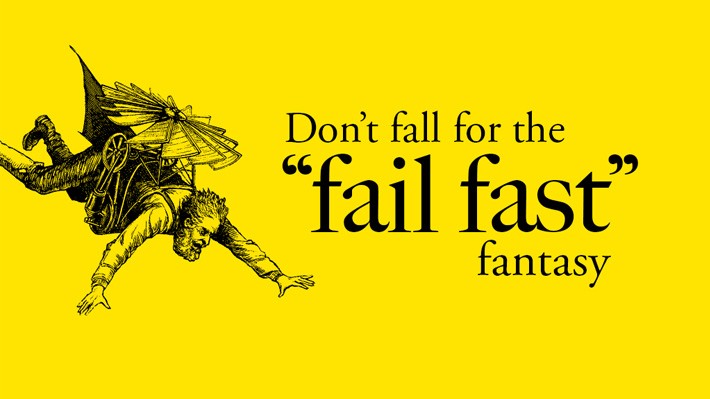
by Robyn Bolton | Oct 26, 2022 | Innovation, Stories & Examples, Tips, Tricks, & Tools
Innovation thrives within constraints.
Constraints create the need for questions, creative thinking, and experiments.
But as real as constraints are and as helpful as they can be, don’t simply accept them. Instead, question them, push on them, and explore around them.
But first, find the horse’s a**
How Ancient Rome influenced the design of the Space Shuttle
In 1974, Thiokol, an aerospace and chemical manufacturing company, won the contract to build the solid rocket boosters (SRBs) for the Space Shuttle. The SRBs were to be built in a factory in Utah and transported to the launch site via train.
The train route ran through a mountain tunnel that was just barely wider than the tracks.
The standard width of railroad tracks (distance between the rails or the railroad gauge) in the US is 4 feet, 8.5 inches which means that Thiokol’s engineers needed to design SRBs that could fit through a tunnel that was slightly wider than 4 feet 8.5 inches.
4 feet 8.5 inches wide is a constraint. But where did such an oddly specific constraint come from?
The designers and builders of America’s first railroads were the same people and companies that built England’s tramways. Using the existing tramways tools and equipment to build railroads was more efficient and cost-effective, so railroads ended up with the same gauge as tramways – 4 feet 8.5 inches.
The designers and builders of England’s tramways were the same businesses that, for centuries, built wagons. Wanting to use their existing tools and equipment (it was more efficient and cost-effective, after all), the wagon builders built tramways with the exact distance between the rails as wagons had between wheels – 4 feet 8.5 inches.
Wagon wheels were 4 feet 8.5 inches apart to fit into the well-worn grooves in most old European roads. The Romans built those roads, and Roman chariots made those grooves, and a horses pulled those chariots, and the width of a horses was, you guessed it, 4 feet 8.5 inches.
To recap – the width of a horses’ a** (approximately 4 feet 8.5 inches) determined the distance between wheels on the Roman chariots that wore grooves into ancient roads. Those grooves ultimately dictated the width of wagon wheels, tramways, railroad ties, a mountain tunnel, and the Space Shuttle’s SRBs.
How to find the horse’s a**
When you understand the origin of a constraint, aka find the horse’s a***, it’s easier to find ways around it or to accept and work with it. You can also suddenly understand and even anticipate people’s reactions when you challenge the constraints.
Here’s how you do it – when someone offers a constraint:
- Thank them for being honest with you and for helping you work more efficiently
- Find the horse’s a** by asking questions to understand the constraint – why it exists, what it protects, the risk of ignoring it, who enforces it, and what happened to the last person who challenged it.
- Find your degrees of freedom by paying attention to their answers and how they give them. Do they roll their eyes in knowing exasperation? Shrug their shoulders in resignation? Become animated and dogmatic, agitated that someone would question something so obvious?
How to use the horse’s a** to innovate
You must do all three steps because stopping short of step 3 stops creativity in its tracks.
If you stop after Step 1 (which most people do), you only know the constraint, and you’ll probably be tempted to take it as fixed. But maybe it’s not. Perhaps it’s just a habit or heuristic waiting to be challenged.
If you do all three steps, however, you learn tons of information about the constraint, how people feel about it, and the data and evidence that could nudge or even eliminate it.
At the very least, you’ll understand the horse’s a** driving your company’s decisions.
Endnotes:
- To be very clear, the origin of the constraint is the horse’s a**. The person telling you about the constraint is NOT the horse’s a**.
- The truth is never as simple as the story and railroads used to come in different gauges. For a deeper dive into this “more true than not” story (and an alternative theory that it was the North’s triumph in the Civil War that influenced the design of the SRBs, click here

by Robyn Bolton | Oct 5, 2022 | Customer Centricity, Innovation, Stories & Examples, Tips, Tricks, & Tools
Being the smart innovator (and businessperson) you are, you know it’s important to talk to customers. You also know it’s important to listen to them.
It’s also important to ignore your customers.
(Sometimes)
Customers will tell you what the problem is. If you stay curious and ask follow-up questions (Why? and Tell me more), they’ll tell you why it’s a problem and the root cause. You should definitely listen to this information.
Customers will also tell you how to fix the problem. You should definitely ignore this information.
To understand why, let me tell you a story.
Eye contact is a problem
Years ago, two friends and I took a day trip to Maine. It was late in Fall, and many lobster shacks dotting the coast were closed for the season. We found one still open and settled in for lunch.
Now, I’m a reasonably adventurous eater. I’ll try almost anything once (but not try fried tarantulas). However, I have one rule – I do not want to make eye contact with my food.
Knowing that lobsters are traditionally served with their heads still attached, I braced for the inevitable. As the waitress turned to me, I placed the same order as my friends but with a tiny special request. “I’ll have the lobster, but please remove its head.”
You know that scene in movies when the record scratches, the room falls silent, and everyone stops everything they’re doing to stare at the person who made an offending comment? Yeah, that’s precisely what happened when I asked for the head to be removed.
The waitress was horrified,” Why? That’s where all the best stuff is!”
“I don’t like making eye contact with my food,” I replied.
She pursed her lips, jotted down my request, and walked away.
A short time later, our lunch was served. My friends received their lobsters as God (or the chef) intended, head still attached. Then, with great fanfare, my lobster arrived.
Its head was still attached.
But we did not make eye contact.
Placed over the lobster’s eyes were two olives, connected by a broken toothpick and attached to the lobster’s “ears” by two more toothpicks.
The chef was offended by my request to remove the lobster’s head. But, because he understood why I wanted the head removed, he created a solution that would work for both of us – lobster-sized olive sunglasses.
Are you removing the head or making sunglasses?
Customers, like me, are experts in problems. We know what the problems are, why they’re problems, and what solutions work and what don’t. So, if you ask us what we want, we’ll give you the solution we know – remove the head.
Innovators, like you and the chef, are experts in solutions. You know what’s possible, see the trade-offs, and anticipate the consequences of various choices. You also take great pride in your work and expertise, so you’re not going to give someone a sub-par solution simply because they asked for it. You’re going to provide them with olive sunglasses.
Next time you talk to customers, stay curious, ask open-ended questions, ask follow-up questions, and build a deep understanding of their problems. Then ignore their ideas and suggestions. They’ll only stand in the way of your olive sunglasses.

by Robyn Bolton | Jul 24, 2022 | Customer Centricity, Innovation, Leadership, Metrics, Stories & Examples, Strategy
Many years ago, Clay Christensen visited his firm where I was a partner and told us a story*.
“I imagine the day I die and present myself at the entrance to Heaven,” he said. “The Lord will show me around, and the beauty and majesty will overcome me. Eventually, I will notice that there are no numbers or data in Heaven, and I will ask the Lord why that is.”
“Data lies,” the Lord will respond. “Nothing that lies can be in Heaven. So, if people want data, I tell them to go to Hell.”
We all chuckled at the punchline and at the strength of the language Clay used (if you ever met him, you know that he was an incredibly gentle and soft-spoken man, so using the phrase “go to Hell” was the equivalent of your parents unleashing a five-minute long expletive-laden rant).
“If you want data, go to Hell.”
Clay’s statement seems absolutely blasphemous, especially in a society that views quantitative data as the ultimate source of truth:
- “In God we trust. All others bring data.” W. Edward Deming, founding Father of Total Quality Management (TQM)
- “Above all else, show the data.” – Edward R. Tufte, a pioneer in the field of data visualization
- “What gets measured gets managed” – Peter Drucker, father of modern management studies
But it’s not entirely wrong.
Quantitative Data’s blessing: A sense of safety
As humans, we crave certainty and safety. This was true millennia ago when we needed to know whether the rustling in the leaves was the wind or a hungry predator preparing to leap and tear us limb from lime. And it’s true today when we must make billion-dollar decisions about buying companies, launching products, and expanding into new geographies.
We rely on data about company valuation and cash flow, market size and growth, and competitor size and strategy to make big decisions, trusting that it is accurate and will continue to be true for the foreseeable future.
Quantitative Data’s curse: The past does not predict the future
As leaders navigating an increasingly VUCA world, we know we must prepare for multiple scenarios, operate with agility, and be willing to pivot when change happens.
Yet we rely on data that describes the past.
We can extrapolate it, build forecasts, and create models, but the data will never tell us with certainty what will happen in the future. It can’t even tell us the Why (drivers, causal mechanisms) behind the What it describes.
The Answer: And not Or
Quantitative data Is useful. It gives us the sense of safety we need to operate in a world of uncertainty and a starting point from which to imagine the future(s).
But, it is not enough to give the clarity or confidence we need to make decisions leading to future growth and lasting competitive advantage.
To make those decisions, we need quantitative data AND qualitative insights.
We need numbers and humans.
Qualitative Insight’s blessing: A view into the future
Humans are the source of data. Our beliefs, motivations, aspirations, and actions are tracked and measured, and turned into numbers that describe what we believed, wanted, and did in the past.
By understanding human beliefs, motivations, and aspirations (and capturing them as qualitative insights), we gain insight into why we believed, wanted, and did those things and, as a result, how those beliefs, motivations, aspirations, and actions could change and be changed. With these insights, we can develop strategies and plans to change or maintain beliefs and motivations and anticipate and prepare for events that could accelerate or hinder our goals. And yes, these insights can be quantified.
Qualitative Insight’s curse: We must be brave
When discussing the merit of pursuing or applying qualitative research, it’s not uncommon for someone to trot out the saying (erroneously attributed to Henry Ford), “If I asked people what they wanted, they would have said a horse that goes twice as fast and eats half as much.”
Pushing against that assertion requires you to be brave. To let go of your desire for certainty and safety, take a risk, and be intellectually brave.
Being brave is hard. Staying safe is easy. It’s rational. It’s what any reasonable person would do. But safe, rational, and reasonable people rarely change the world.
One more story
In 1980, McKinsey predicted that the worldwide market for cell phones would max out at 900,000 subscribers. They based this prediction on solid data, analyzed by some of the most intelligent people in business. The data and resulting recommendations made sense when presented to AT&T, McKinsey’s client.
Five years later, there were 340,213 subscribers, and McKinsey looked pretty smart. In 1990, there were 5.3 million subscribers, almost 6x McKinsey’s prediction. In 1994, there were 24.1M subscribers in the US alone (27x McKinsey’s global forecast), and AT&T was forced to pay $12.6B to acquire McCaw Cellular.
Should AT&T have told McKinsey to “go to Hell?” No.
Should AT&T have thanked McKinsey for going to (and through) Hell to get the data, then asked whether they swung by earth to talk to humans and understand their Jobs to be Done around communication? Yes.
Because, as Box founder Aaron Levie reminds us,
“Sizing the market for a disruptor based on an incumbent’s market is like sizing a car industry off how many horses there were in 1910.”
* Except for the last line, these probably (definitely) weren’t his exact words, but they are an accurate representation of what I remember him saying

by Robyn Bolton | Jun 8, 2022 | Innovation, Leadership, Stories & Examples
“Fail Fast”
It’s an innovation mantra uttered by everyone, from an entry-level programmer at a start-up to a Fortune 100 CEO.
But let’s be honest.
NO ONE WANTS TO FAIL!
(at any speed)
The reality is that we work in companies that reward success and relentlessly encourage us to become great at a specific skill, role, or function. As a result, our natural and rational aversion to failure is amplified, and most of us won’t even start something if there’s a chance that we won’t be great at it right away.
It’s why, despite your best efforts to encourage your team to take risks and embrace “failure,” nothing changes.
A Story of Failure?
A few weeks ago, while on vacation, I dusted off an old copy of Drawing on the Right Side of the Brain by Betty Edwards. As a kid, I was reasonably good at drawing, so I wasn’t worried about being bad, just rusty.
Then I read the first exercise: Before beginning instruction, draw each of the following:
- “A Person, Drawn from Memory”
- “Self-Portrait”
- “My Hand”
I stared at the page. Thoughts raced through my head:
- You have to be kidding me! These are the three most challenging things to draw. Even for a professional!
- How am I supposed to do this without instructions?
- Maybe I’ll skip this step, read the rest of the book to get the instructions I need, then come back and try this once I have all the information.
- Forget it. I’m not doing this.
Confronted by not one but THREE things to be bad at, I was ready to quit.
Then I took a deep breath, picked up my trusty #2 pencil, and started to draw.
The results were terrible.
A Story of Success
It would be easy to look at my drawings and declare them a failure – my husband is missing his upper lip, I look like a witch straight out of Grimm’s Fairy Tales, and the thumb on my left hand is the same length as my index finger.
But I didn’t fail*.
I started
I did my best
I learned a lot
I did better the next time.
By these standards, my first attempts were a success**
Ask for what you want
Isn’t that what you want your team to do?
To stop analyzing and posturing and start doing.
To do their best with what they have and know now, instead of worrying about all the possibilities.
To admit their mistakes and share their learnings.
To respond to what they learned, even if it means shutting down a project, and keep growing.
Ask them to do those things.
Ask them to “Learn fast.”
Your people want to learn. They want to get smarter and do better. Encourage that.
Ask them to keep learning.
Your team will forget that their first attempt will be uncomfortable and their first result terrible. That’s how learning starts. It’s called “growing pains,” not “growing tickles,” for a reason.
Ask them to share what they learned.
Your team will want to hide their mistakes, but that doesn’t make anyone better or wiser. Sharing what they did and what they learned makes everyone better. Reward them for it.
Ask the team what’s next
It’s not enough to learn one thing quickly. You need to keep learning. Your team is in the trenches, and they know what works, what doesn’t, and why. Ask for their opinions, listen carefully, discuss, and decide together what to learn next.
You don’t want your team to fail.
You want them to succeed.
Ask them to do what’s necessary to achieve that
“Act Now. Learn Fast.”
*Achieving perfect (or even realistic) results on my first attempt is impossible. You can’t fail at something impossible
** To be clear, I’m not making a case for “participation trophies.” You gotta do more than just show up (or read the book). You gotta do the work. But remember, sometimes success is simply starting.

by Robyn Bolton | Apr 5, 2022 | Innovation, Stories & Examples
“That’s not how we do it here.”
Very few phrases induce more eye-rolls or are more effective in shutting down change than that.
But how can you argue when “how we do it here” works (for now), is what everyone knows, and is “consistent with our culture?”
You go Bananas!
In March, my husband and I traveled to Savannah to watch the Savannah Bananas play their cross-town rival, the Party Animals.
Over a year ago, I became obsessed with the Bananas, a collegiate summer team, and their unique brand of baseball known as Banana Ball. The rules are as follows:
- Every inning counts: The team that scores the most runs in an inning gets 1 point, and the team with the most points at the end of the game wins.
- Two-hour time limit: If the game is tied at the end of nine innings or 2 hours, then there is a…
- 1:1 Showdown Tiebreaker: In the event of a tie, 3 players are on the field (pitcher, catcher, fielder) and 1 batter who has to hit a home run or, well, it gets complicated and chaotic, so click here to get the details
- No stepping out of the batter’s box
- No mound visits
- No bunting
- No walks: If a 4th ball is thrown, the batter takes off running, and every defensive player must touch the ball before it becomes live and a play can be made
- Batters can steal first (I have been advocating for this since 1995, no joke, ask my dad)
- If a fan catches a foul ball, it’s an out
Lest you think I’m the only crazy person who would travel for this spectacle, there were people from 24 different states at the game. The Bananas have led their league in attendance since 2016 and set a record in 2018 with 118,262 fans over 25 games.
Lest you think the Bananas are the Harlem Globetrotters of baseball, they won the Coastal Plain League in 2016 and 2021, and 8 Bananas were drafted in 2021.
So yeah, they’re good, too.
It started with “What if”
Despite record attendance and a championship in their first season, the Bananas’ owner, Jesse Cole, wasn’t satisfied. Even though they created a fans first experience, people were still leaving before the game ended.
You can read the full story of how Banana Ball was born, but here’s the gist:
- Jesse’s dad said, “What if every inning was match play and whoever won the inning got a point?”
- Jesse, the front office team, and the head coach brainstormed a handful of rule changes to “highlight the more exciting parts of baseball while also countering the slower aspects of the game that tend to bore your average fan.”
- Jesse called his college baseball coach, then the head coach at Lander University, and asked if they could play a game with the new rules as an experiment. The answer, “Why not?”
- It worked! The players loved it. The coaches loved it. Even the players’ girlfriends, who usually sat in the stands in did their homework, watched every minute.
- They kept experimenting. Over 1.5 years (from 2018 to 2020), the Bananas kept tweaking the rules, adding new ones and removing ones that didn’t contribute to the goal of more excitement and a better fan experience.
What’s your Banana Ball?
Why am I telling you all this (besides the fact that I am obsessed)?
Because if a collegiate summer league team with a silly name can up-end (even in a small way) an institution as stodgy as baseball and convert its grumpiest purists, you can too!
Follow the playbook:
- Don’t ever be satisfied: Things can always be better. It’s great to start with a sell-out, but if people don’t stick around, there’s an opportunity to improve.
- Define your Why. What is your version of “highlight the more exciting parts of baseball while also countering the slower aspects of the game that tend to bore your average fan.”
- Ask What if. Use analogies like Jesse’s dad did when he transplanted golf’s match play to baseball.
- Run small experiments with friendly people. The Bananas didn’t play Banana Ball rules in the first game after drafting the rules. They called a friend and ran an experiment.
- Gather all the data. The Bananas knew that the payers had to enjoy playing by Banana rules for them to stick, so they asked for feedback. They also realized that the girlfriends’ behavior change was data, even if it’s not the data the experiment was designed to collect.
- Keep experimenting. One success is just that. You need a second, a third, and a whole bunch more before being confident it will last.
- Have fun. Baseball is a business, but it’s also a game. Your job can be both, too.

by Robyn Bolton | Mar 23, 2022 | Customer Centricity, Innovation, Stories & Examples
“He’s just not that into you.”
That sentence is usually uttered as tough-love advice to a friend who can’t seem to let go of a guy that’s clearly let go of her. A few weeks ago, it was tough love advice to one of my friends who couldn’t understand why customers weren’t swooning over his company’s newest product.
They didn’t hate.
But most didn’t like it enough to buy it.
It wasn’t rejection that was killing the business. It was apathy.
It was painful to witness.
It is also solvable.
Breeding apathy
I’m a baseball fan. I’m also the first to admit that baseball breeds apathy amongst its fans.
4-hour games. At-bats that feel like 4 hours. Fan involvement that is limited mainly to the Wave and the 7th Inning Stretch. It’s boring.
Unless you’re in Savannah, GA.
If you’re in Savannah to see baseball, you show up 2 hours before the game starts. When the gates open, you rush to your seats because you don’t want to miss a moment of the pre-game festivities. During the game, you bounce in and out of your seat so much that it counts as a workout. After the game, you spend another hour dancing and singing with the band and the team. By the time you get home, your voice is hoarse, your head is spinning, and you swear you never knew a baseball game could be so fun.
It’s bananas. The Savannah Bananas.
Converting the apathetic into raving fans
How do they do it?
How does a collegiate summer baseball team sell out every game since 2016 and routinely attract people from around the world?
More importantly, what can you (and my friend) learn from them?
1. Do Your (customers’) Job (to be Done).
Most people go to baseball games to have fun and make memories. Most MLB franchises are focused on making a profit and winning trophies. Not a whole lot of overlap there.
The Bananas promise “to provide an electric atmosphere at all of our games! Our fans come first, and we’re dedicated to entertaining you!” There’s a complete overlap between what the fans want – have fun and make memories – and what the Bananas offer.
2. Deliver an end-to-end experience
For most businesses, designing and delivering an end-to-end experience is about investing in technology to make buying their products “frictionless” and training customer service to be more “helpful.”
The Bananas invest in delivering delight. Here’s what happened after I spent a whopping $50 to buy two tickets:
- I received an email telling me I had just made the “best decision of my life” and sharing a video of the “live” view of their offices when my order came in (dancing and chaos)
- Three days later, Carson called to thank me for buying tickets
- Two weeks before the game, they emailed to help me “mentally prepare” for the experience.
- One week before the game, they sent a permission slip to give to my boss to get out of work early.
- On gameday, they emailed a Spotify playlist so we could prepare for the game
- The day after, they emailed a handwritten thank you note from the owners
- A week after the game, they emailed a video montage of the game we attended
3. Be human
Most companies “run lean” and use technology to improve efficiencies because humans are expensive.
The Bananas are human. Carson emailed the permission slip. She also called to thank me for buying tickets. Nick sent the gameday email. He also gave me the wristband required to get to our seats. The owner, Jesse Cole, spent the night running around in a yellow tuxedo hyping up the crowd. His wife wrote a thank you letter.
4. Give thanks. No strings attached
We’ve all received the “Thank You for Your Purchase” email after an online transaction. We also know that the email will ask for something more – track your package, write a review, post on social media, buy another product.
The Bananas say, “Thank You,” then give you something more – a funny video, a permission slip, a Spotify playlist, a handwritten thank you note. They don’t ask you to buy merchandise or post about your experience on social media, or leave them a review.
5. Care
If you don’t care about your product, no one else will.
In a world of baseballs, be a banana.
There are dozens of other things the Savannah Bananas do that make them unique and delightful that your business (and MLB) would struggle to copy.
But there are at least five things you can copy to stave off customer apathy and inspire die-hard, life-long, “tell all your friends” loyalty.
What did I miss? What have YOU experienced or done to be a banana?





